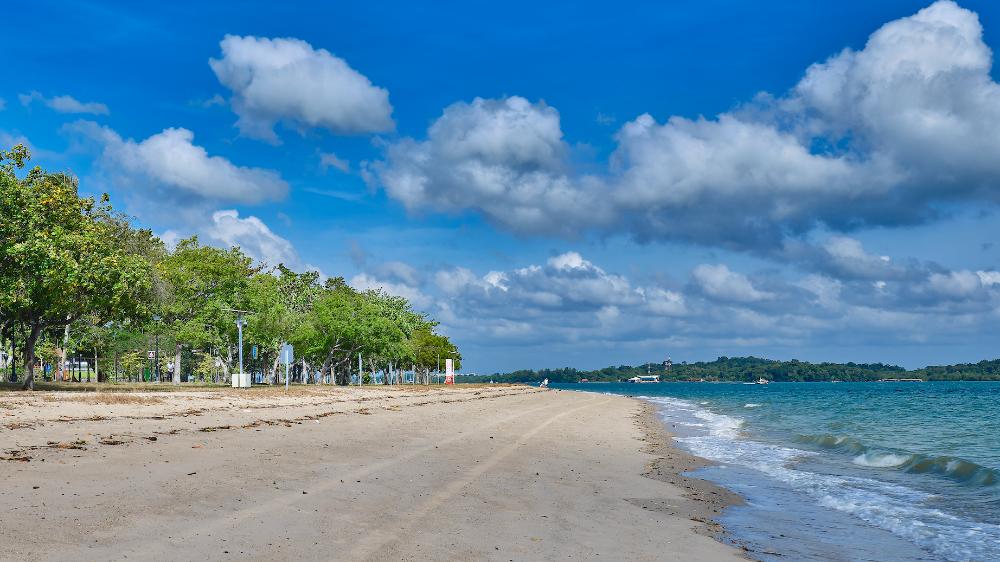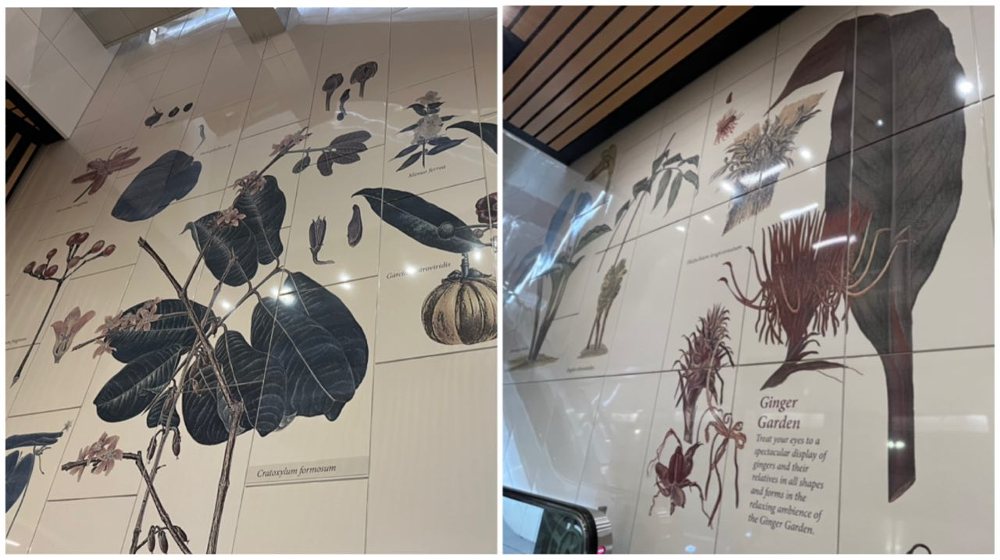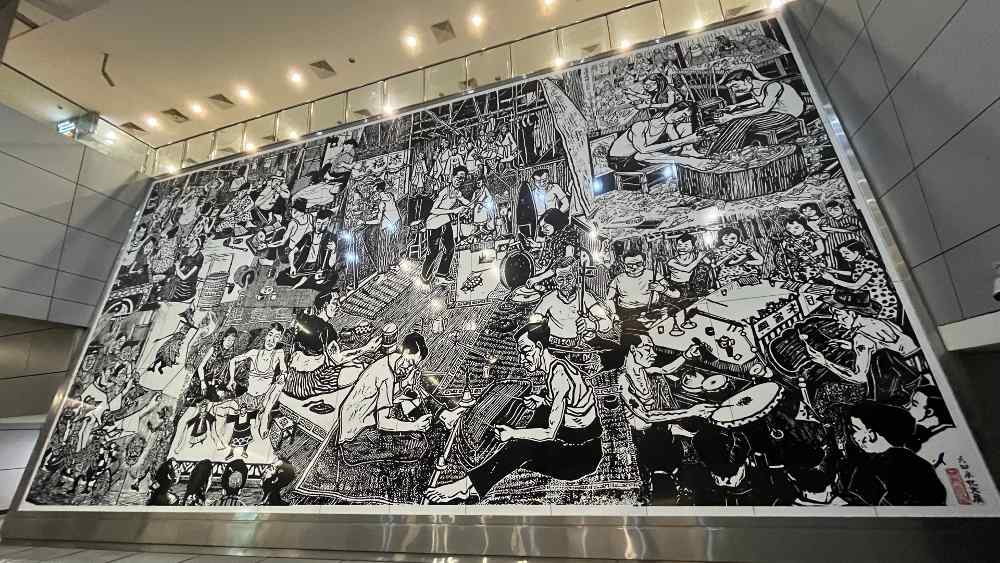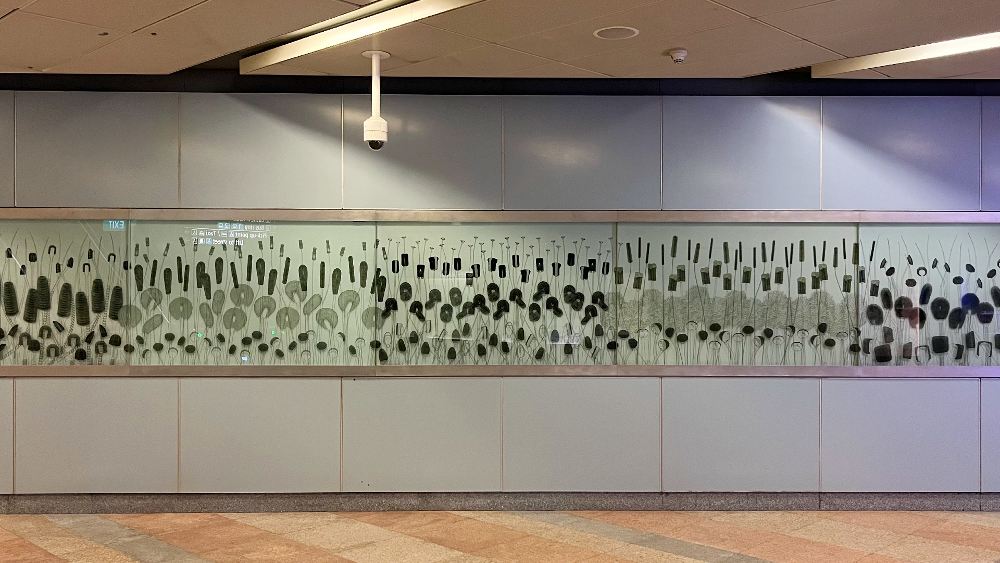Adventures At Home: Let's Rediscover Balestier
Balestier is top tier when it comes to bah kut teh, chicken rice, and home furnishing shops. But all the way back in 1835, the area was a sugarcane estate owned by Joseph Balestier, the first American Consul to Singapore. (Now we're craving for sugarcane juice...)
When he left the country in 1848, Balestier (the area named after him) steadily gave way to colonial homes, shophouses, and temples. Today, modern high-rise buildings stand side by side with these relics of the past.
Guided by the National Heritage Board’s Balestier Heritage Trail in hand, we visit the major landmarks here, and uncover the rich history and stories behind this neighbourhood.
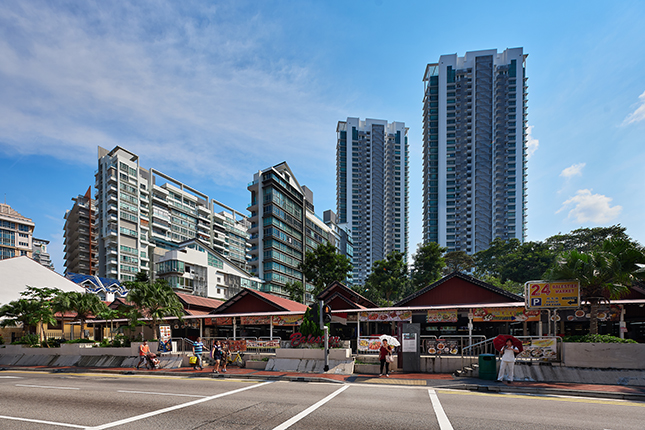
Brekkie at Balestier Market
Balestier Market is the sole surviving rural-market building on our Little Red Dot. Built in 1922 as a wet market, locals fondly call this place Or Kio Pa Sat (Hokkien for "black bridge market", as there used to be a black wooden bridge here). Another name for this place was Tee Pa Sat (Hokkien for "iron market") - in the past, there was a metal fence that surrounded this market.
Today, Balestier Market is home to some really good makan, like Long House Soon Kee Boneless Lor Duck Rice and Miao Sin Popiah.
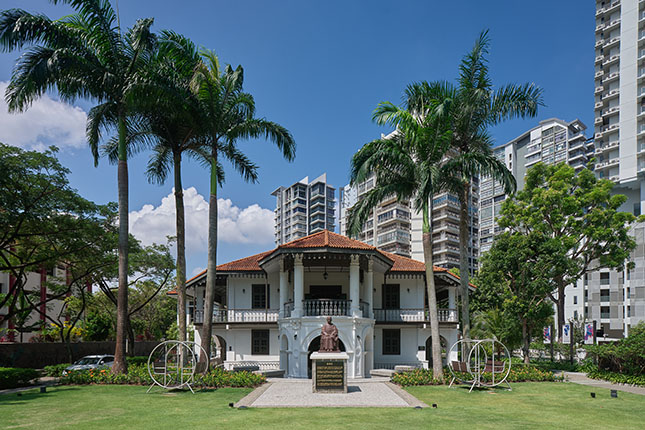
Catch up on Chinese history at Sun Yat Sen Nanyang Memorial Hall
This was the Southeast Asian HQ of the Chinese Revolutionary Alliance aka Tong Meng Hui, which overthrew the Chinese imperial government in 1911. History buffs can spend hours here in the galleries which tell the story leading to the 1911 revolution from the perspectives of Chinese communities in our region. This building was gazetted as a National Monument in 1994.
Posted by Wan Qing Yuan - Sun Yat Sen Nanyang Memorial Hall 晚晴园-孙中山南洋纪念馆 on Monday, 6 September 2021
The hall continues to organise new activities to attract the younger crowd. Last month, they worked with artist Ngaew Ngaew to create lantern characters for a Mid-Autumn Festival display on their lawn. Omg so cute sia.
Posted by Loong Fatt on Friday, 13 March 2020
May the brightness of the moon and stars illuminate your life with positivity and happiness. ✨ Loong Fatt wishes you a blissful and joyful Mid-Autumn Moon Festival. \ud83c\udf19
Posted by Loong Fatt on Sunday, 19 September 2021
Stop for a snack at Loong Fatt Tau Sar Piah
8 min walk from Sun Yat Sen Nanyang Memorial Hall
The third generation owners of this establishment which opened in 1948 have maintained the family’s traditional recipe - combining the western way of making pastry with traditional methods of baking tau sar piah. The result is a crunchy exterior that gives way to a delicious paste inside, which can be either salty or sweet - you choose.
Get into film photography at Whampoa Color Centre
5 mins walk from Whampoa Makan Place
Shooting on film has been making a comeback lately, and if you’re interested in the analog movement, then you'll need a place to develop your photos. Head over to Whampoa Color Centre, one of the few remaining film processing shops left in the country. Plenty of good reviews for the uncle-and-auntie owners' warm hospitality and quick service.
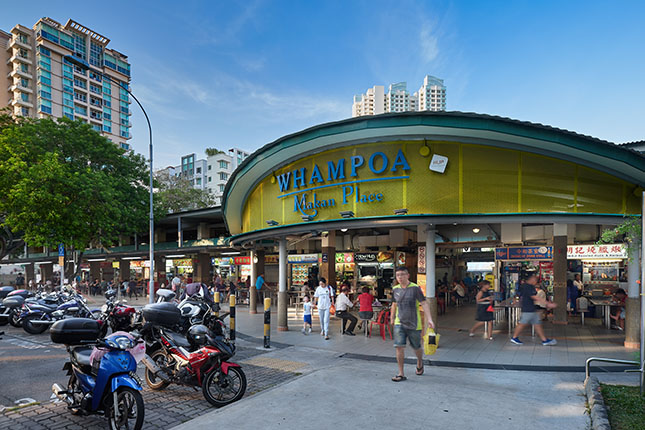
Lunch pitstop at Whampoa Makan Place
Everyone knows that there is plenty of good food at Whampoa Market Place, but not many can tell you that it used to be a municipal wet market.
The Rayman Market (nothing to do with the Rayman video game), was opened in 1952 to serve the old Rayman housing estate here. It was replaced by the Whampoa Market and Food Centre in 1973, which was upgraded and given its present-day name in 2006.
Whampoa Makan Place has several Michelin Bib Gourmand recipients: Balestier Road Hoover Rojak, Liang Zhao Ji duck rice, and Beach Road Fish Head Bee Hoon.
Posted by Sing Hon Loong Bakery on Tuesday, 25 March 2014
Dabao some bread from Sing Hon Loong Bakery
2 mins walk from Whampoa Makan Place
These guys have been baking bread in the same traditional way for more than 50 years. Choose your loaf and the staff will generously slab butter, kaya, or peanut butter - your call! The curry buns here are popular among regulars too.
Go for an eye check-up at Lim Kay Khee Optical & Contact Lens Centre
5 mins walk from Whampoa Makan Place
There’s an Owndays and Lenskart in every mall, but old-school optical shops like Lim Kay Khee are a dying breed. Stepping into this store opened by Lim Seah Seng’s dad, you'll feel as though time has come to a standstill - the retro eye-test machine and old photos on the wall make it feel like you've time-travelled back to the 80s.
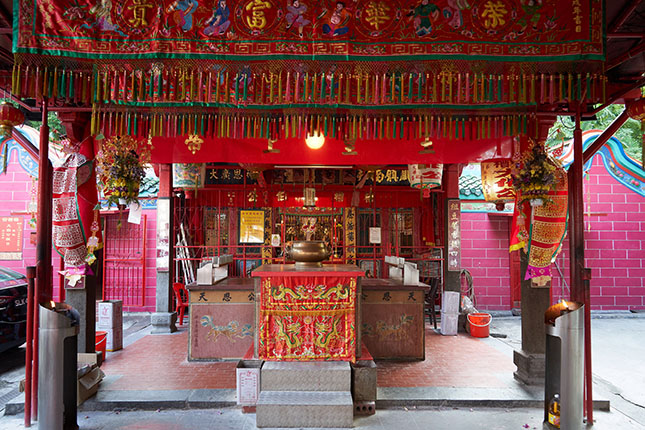
Visit the Goh Chor Tua Pek Kong Temple
This little red brick temple is the oldest religious institution in the neighbourhood. It was established by Hokkien workers in 1847 who worked at Joseph Balestier’s sugarcane estate. Point your cameras to the roof, which feature ornate figures of flowers, birds, dragons, fish, and phoenixes.
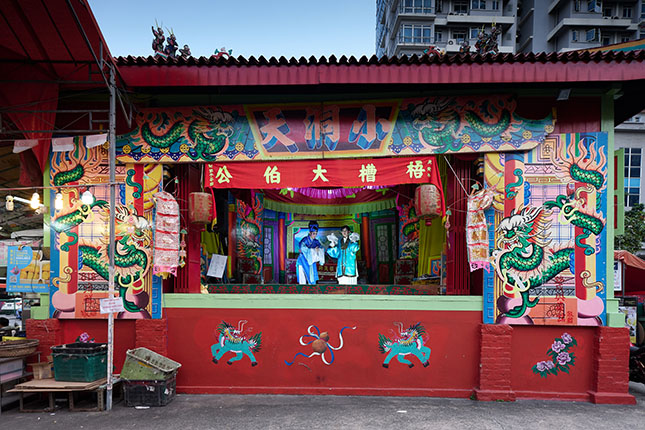
Posted by 梧槽大伯公 Goh Chor Tua Pek Kong on Tuesday, 21 September 2021
Pre-COVID, the temple hosted wayang (Chinese opera) productions for the deities at their 115-year-old free-standing stage, one of the few that still remain in Singapore. The temple hosted a traditional puppet performance back in September, so fingers crossed that there will be more shows soon.
Your Insta-walk checklist here:
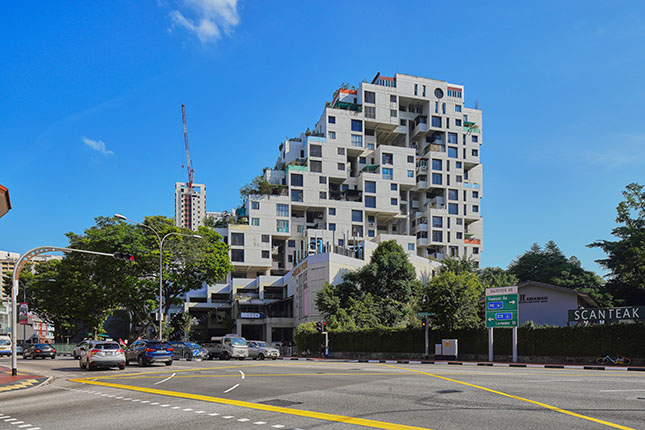
Balestier Point
We’ve featured several residential buildings in our Adventures At Home series, but none so far are as unique as Balestier Point. Completed in 1986, architect Chan Fook Pong was inspired by the Habitat 67 housing complex in Montreal, Canada. The Lego-ish cubical modules in this 18-storey building are arranged in a way that gives each household their own private terrace.
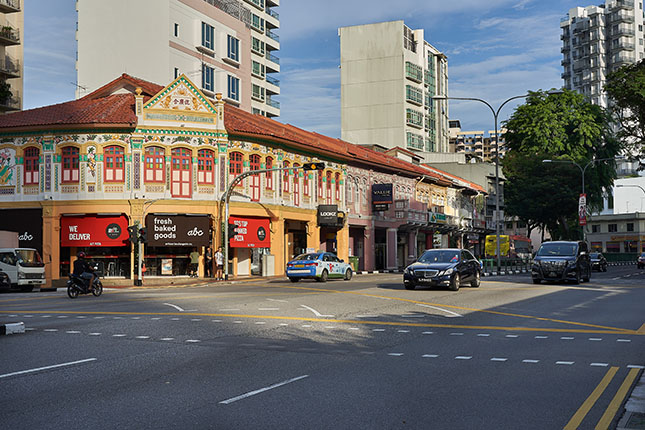
Sim Kwong Ho Shophouses
Make your Insta-feed pop with shots of these shophouses, designed in the Chinese Baroque aka Singapore Eclectic style by architects Westerhout and Oman. This style blends classic European elements with local symbols and motifs. Try to spot reliefs of various animals and flowers along the building’s colourful glazed tiles.
These shophouses were built in 1926 by Madam Sim Cheng Neo, who also owned properties at Sophia Road and Roberts Lane. The name “Sim Kwong Ho” comes from the Chinese characters inscribed on the roof facade.
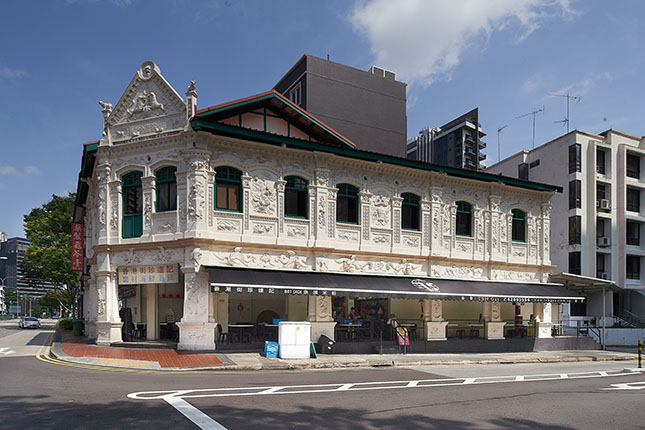
Kwan Yow Luen Shophouses
Another row of shophouses for the ‘Gram, these were also built by Sim Cheng Neo in 1928. Designed by local self-taught architect Kwan Yow Luen, the buildings feature elaborate reliefs of animals (including a pair of lions flanked by water buffalos) and flowers throughout the exterior cream-coloured walls.
These shophouses were featured in two old Malay films, the 1955 movie “Penarek Becha” ("The Trishaw Puller") and the 1956 P Ramlee flick “Anak-ku Sazali” ("My Son Sazali").
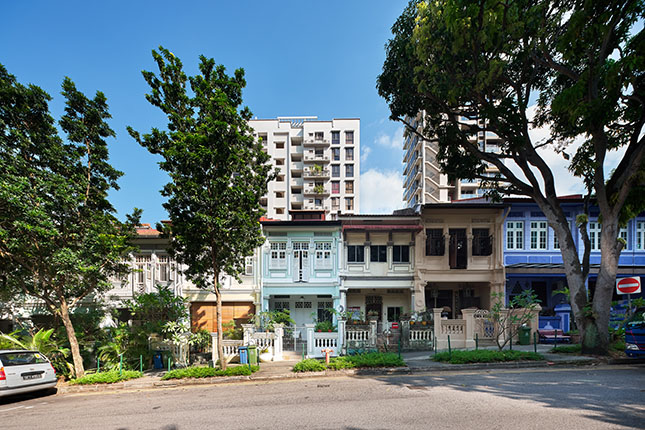
Pre-war Terrace Houses
The next Instagram-worthy spot on our checklist was built between the 1920s and the 1940s. The layout was not what you'd find in a typical shophouse: the 1st floor was also where people lived. These houses were conserved in 2003, and the unit at 13 Martaban Road was presented with the Architectural Heritage Award in 2007 for its restoration quality.
Martaban is actually the old name of Mottama port in Myanmar. In fact, several other roads in the area were named after places in Myanmar - Pegu Road, Irrawaddy Road, and Akyab Road. The Burmese connection to Balestier is unclear. Some believe that it was because a respected Burmese resident used to live in the area, while others thought it was because of how close the area was to this temple...
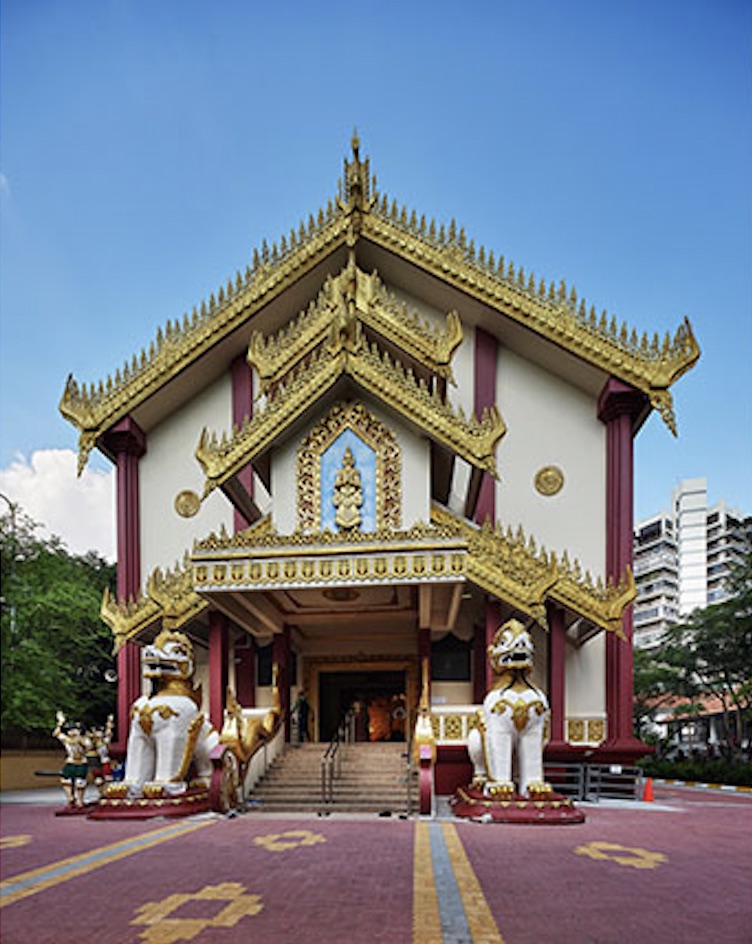
Maha Sasanaramsi Burmese Buddhist Temple
This temple serving Singapore’s Burmese Buddhist community was completed in 1991. It was originally establised in 1878 at Kinta Road off Serangoon Road, but moved to its current location after the original site was earmarked for redevelopment.
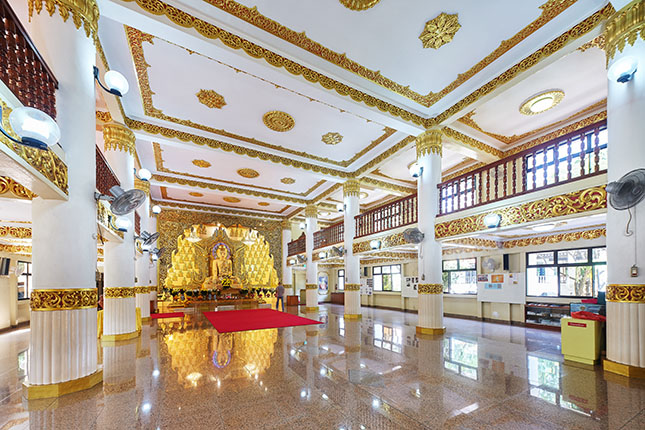
The multi-tiered roof is made of Burmese teak, and inside stands a 3.3m tall Buddha statue carved from a 10-tonne marble block discovered at Mandalay, Myanmar, in 1918. Wow fact: This is the biggest marble Buddha statue in the world outside of Myanmar.
Happening history sia
If you’re interested to explore the rich history of Balestier, you can follow NHB’s Balestier Heritage Trail. There are three suggested routes you can take:
- Historical Landmarks of Balestier, 1.7km: 45 min on foot
- Faith, Film and Food, 2.3km: 1 hour 30 min; on foot
- Building Balestier, 3km (4km including optional sites): 2 hours; on foot
For the latest updates on Wonderwall.sg, be sure to follow us on TikTok, Telegram, Instagram, and Facebook. If you have a story idea for us, email us at [email protected].







